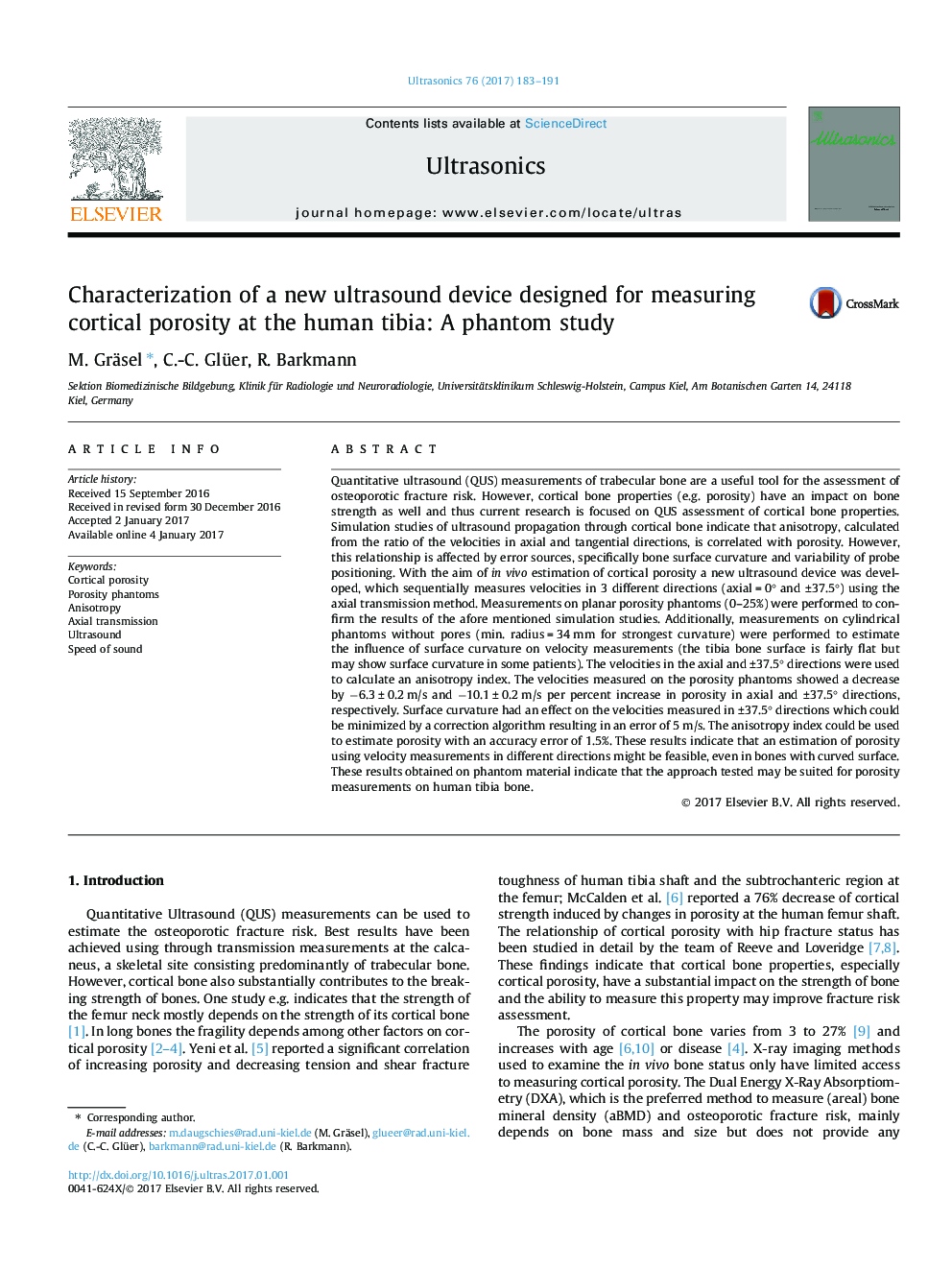| کد مقاله | کد نشریه | سال انتشار | مقاله انگلیسی | نسخه تمام متن |
|---|---|---|---|---|
| 5485376 | 1523193 | 2017 | 9 صفحه PDF | دانلود رایگان |
عنوان انگلیسی مقاله ISI
Characterization of a new ultrasound device designed for measuring cortical porosity at the human tibia: A phantom study
ترجمه فارسی عنوان
مشخصه یک دستگاه اولتراسوند جدید برای اندازه گیری تخلخل قشر در شکم انسان: یک مطالعه فانتوم
دانلود مقاله + سفارش ترجمه
دانلود مقاله ISI انگلیسی
رایگان برای ایرانیان
کلمات کلیدی
تخلخل کورتیک، فانتوم های ظریف، ناهمسانگردی، انتقال محوری سونوگرافی، سرعت صوت،
موضوعات مرتبط
مهندسی و علوم پایه
فیزیک و نجوم
آکوستیک و فرا صوت
چکیده انگلیسی
Quantitative ultrasound (QUS) measurements of trabecular bone are a useful tool for the assessment of osteoporotic fracture risk. However, cortical bone properties (e.g. porosity) have an impact on bone strength as well and thus current research is focused on QUS assessment of cortical bone properties. Simulation studies of ultrasound propagation through cortical bone indicate that anisotropy, calculated from the ratio of the velocities in axial and tangential directions, is correlated with porosity. However, this relationship is affected by error sources, specifically bone surface curvature and variability of probe positioning. With the aim of in vivo estimation of cortical porosity a new ultrasound device was developed, which sequentially measures velocities in 3 different directions (axial = 0° and ±37.5°) using the axial transmission method. Measurements on planar porosity phantoms (0-25%) were performed to confirm the results of the afore mentioned simulation studies. Additionally, measurements on cylindrical phantoms without pores (min. radius = 34 mm for strongest curvature) were performed to estimate the influence of surface curvature on velocity measurements (the tibia bone surface is fairly flat but may show surface curvature in some patients). The velocities in the axial and ±37.5° directions were used to calculate an anisotropy index. The velocities measured on the porosity phantoms showed a decrease by â6.3 ± 0.2 m/s and â10.1 ± 0.2 m/s per percent increase in porosity in axial and ±37.5° directions, respectively. Surface curvature had an effect on the velocities measured in ±37.5° directions which could be minimized by a correction algorithm resulting in an error of 5 m/s. The anisotropy index could be used to estimate porosity with an accuracy error of 1.5%. These results indicate that an estimation of porosity using velocity measurements in different directions might be feasible, even in bones with curved surface. These results obtained on phantom material indicate that the approach tested may be suited for porosity measurements on human tibia bone.
ناشر
Database: Elsevier - ScienceDirect (ساینس دایرکت)
Journal: Ultrasonics - Volume 76, April 2017, Pages 183-191
Journal: Ultrasonics - Volume 76, April 2017, Pages 183-191
نویسندگان
M. Gräsel, C.-C. Glüer, R. Barkmann,
